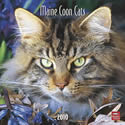|
Healthy Cats Body
The Healthy Cat's Upper Body
A well-toned upper portion of a healthy cats body gives the impression of strength and and movement, translating into speed, agility and grace. Seeing a cat crounched down on the hunt for prey. Watching them moving in a slow motion "crawl" is like poetry in motion. The frame is pefectly aligned with muscles, tendons and bones moving in harmony.
Healthy Cat's Muscular-Skeletal Structure
The proflie of a healthy cats body looks evenly balanced. Head held high, supported by its neck and strong shoulder muscles. The rib cage holds and protects the heart, lungs, liver and gall bladder.
When a cat's weight is at a healthy level, the ribs may be felt but are not visible to the eye. Bone structure is covered and supported by the sysyems of ligaments, muscles and tendons, working together, giving the healthly cat's limbs strength, mobility and speed.
The Healthy Cat's Front Legs and Feet
Front legs of a healthy cat are used for balance, running, climbing and catching prey. Standing, the elbows are held close to the body, thrusting forward when walking. When stretching laterally or scratching a scratching post vertically, the front legs may be fully extended, almost creating a straight line.
The Healthy Cat's Walking Pattern
Humans walk on the heels and balls of their feet. Cats walk on their toes with the heel never touching the ground. Making them digitigrade mammals. Dogs and horses are also digitigrade 0mammals. Animals that walk on the complete sole of the foot, including humans, rabbits and bears are called plantigrade mammals.
Cats have a unique way of walking, moving the front and back legs forward in parallel tandem. Right front and right back leg forward,left front and left back leg forward. In the next step, the cat willplace their left back foot in thes ame place the left front foot vacated.
This is an instinctive protective action, leaving a much smaller and quieter, making it harder for predators to scent and follow. The Cat's Front Toes and Claws
Healthy cats generally have ten toes in front. Exceptions are
polydactyl cats, many times referred to as "Hemingway Cats", that have multiple toes. A cat's toes are very strong, using them to grip and hold surfaces when climbing, to pull their body upward. When chasing a rubber ball or a mouse, a cat can easily catch it with it's toes, holding it by curling the toes and claws inward.
Healthy Cats Body Pictures
|





